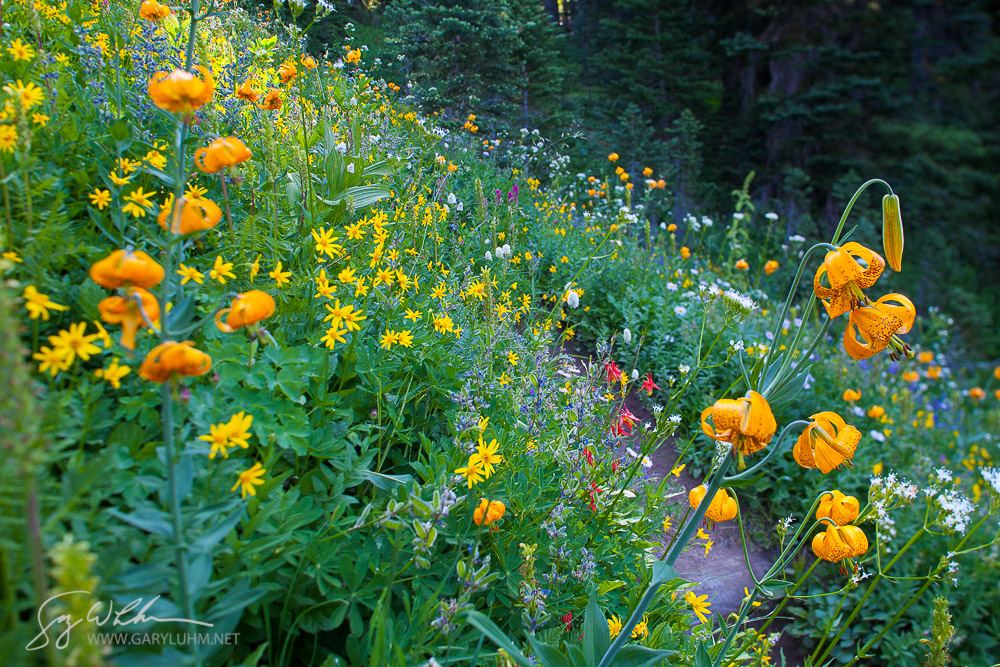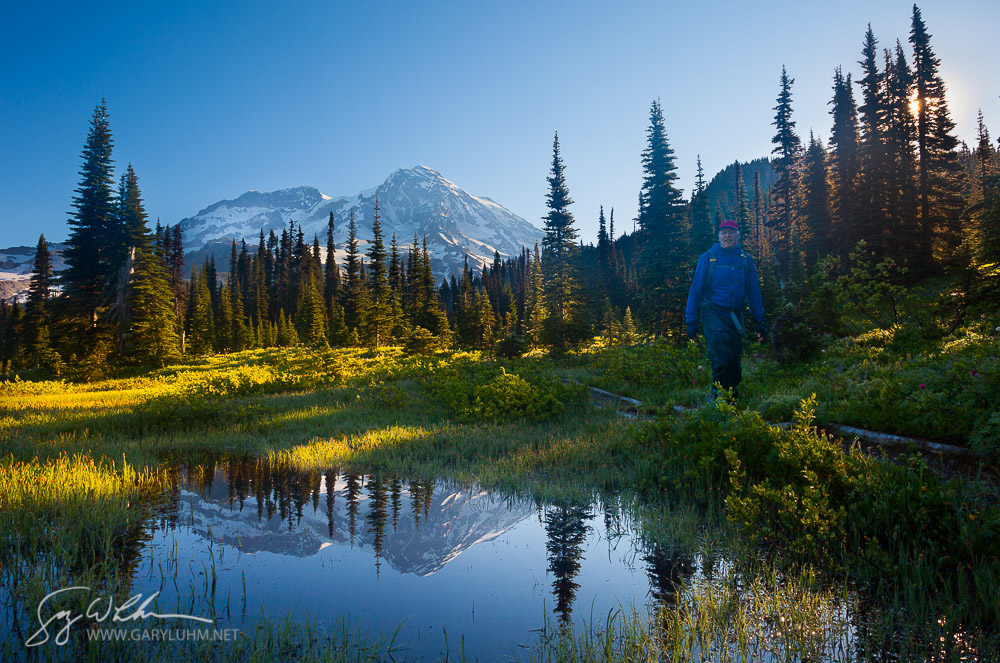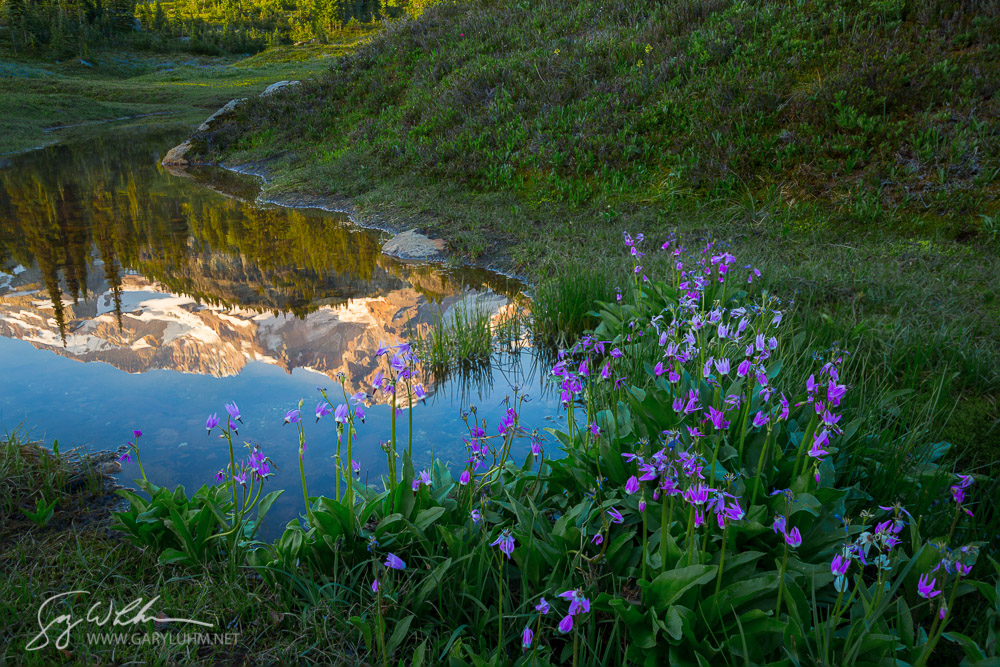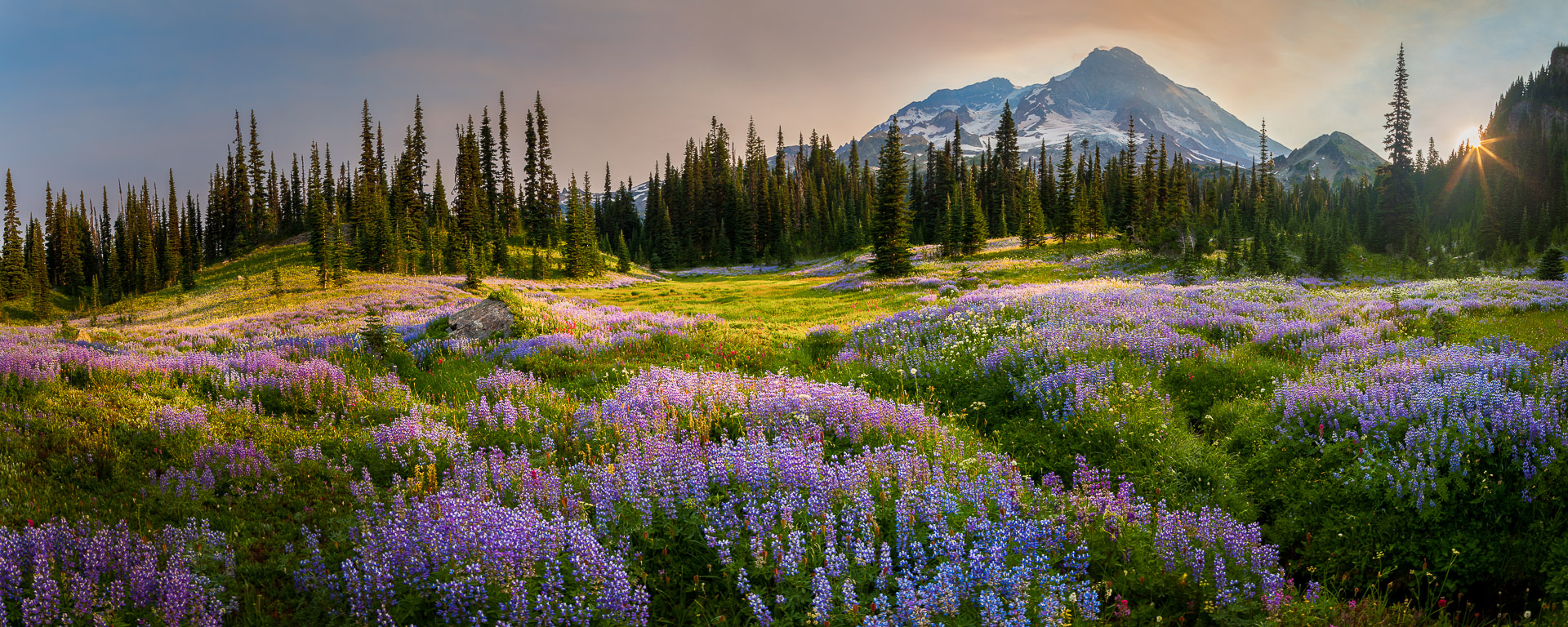Mt. Rainer National Park. I’m in my office, doing Lightroom repair work on an ancient, 2006 image from Indian Henry’s Hunting Ground. The photo didn’t make my (publish) cut years ago, but it wasn’t because composition, light or uniqueness were lacking. It passed those tests. The problem was mosquitoes, which streaked like blobs across sky, cloud and pond. And I had other good shots; why spend time cleaning, especially with 2006-vintage Lightroom tools?

Indian Henry’s is classic Mount Rainier. Wildflowers stretch across rolling meadows with alpine backdrops. Numerous tarns reflect the Mountain. The ranger cabin, built in 1915, made the National Register of Historic Places. The views surpass Paradise, but there are no easy paved trails here near a parking lot. Indeed, a trek of three hours or more one way is required, a serious access challenge.
For photographers, Indian Henry’s is best done by backpack. Most years, you’ll find carpets of avalanche lilies mid-July; densely-packed lupine thru mid-August. There are three ways in. The shortest is up the un-maintained Tahoma Creek trail. The route crosses Tahoma Creek on a photogenic suspension bridge, joining the Wonderland Trial before a climb to an agonizing nirvana. It’s about six miles in, 2,500 ft elevation gain to Mirror Lakes. The other routes, Kautz Creek and Longmire, are longer; both start lower and have ups and downs that add elevation. The Kautz Creek route (7 mi, 3,300 ft) climbs many switchbacks to a shoulder of Mt. Ararat, crossing meadowlands before dropping to a Wonderland Trail junction. The Longmire route (8 mi, 2,900 ft) follows the Wonderland Trail from the south, with a climb to Ramparts Ridge and a drop to cross Kautz Creek before a long slog up; two miles from Mirror Lakes is the mosquito-infested Devil’s Dream camp.


A quarter-mile past the Kautz-Wonderland junction is the Mirror Lakes intersect. From there, travel .4-mi to an exquisitely lovely subalpine meadow. The maintained trail ends at the famed Asahel Curtis postage-stamp tarn, .6-mi from the junction.

For backpackers, an over-night at Devil’s Dream is an option; better, pick up a Pyramid Peak zone cross-country permit and hike ½-mile or more beyond the Mirror Lakes. Set up camp, hang your food and filter water. Grab your camera and explore. Drop back down to the Curtis tarn for sunset; in the morning, delightful compositions await throughout the meadows. Spend a second day summiting Pyramid Peak for panoramic views of Goat Rocks, Mt. Adams, the Tatoosh Range, Mt. St. Helens, south Puget Sound, even Mt. Hood.


The mosquito blobs cleaned up with multiple applications of the Lightroom 2020 Heal/Clone tool. On inspection, though, I think I shot it in haste; I don’t love the foreground arrangement of rocks, and I didn’t take full advantage of the leading-line curve of shore. Can’t imagine why.
Gary

Beautiful photos, bummer about the mosquitoes. Your work is lovely, as always.
Thanks, Lin. One year Kate and I camped two nights below Pyramid Peak. At dawn I photographed for a couple hours, wearing only a thin capilene top because it was hot. When I returned I had a thousand mosquito bites across my shoulders. I’m lucky the itch doesn’t last long.
Very STUNNING Images Gary, As Usual. Well Done Sir!!